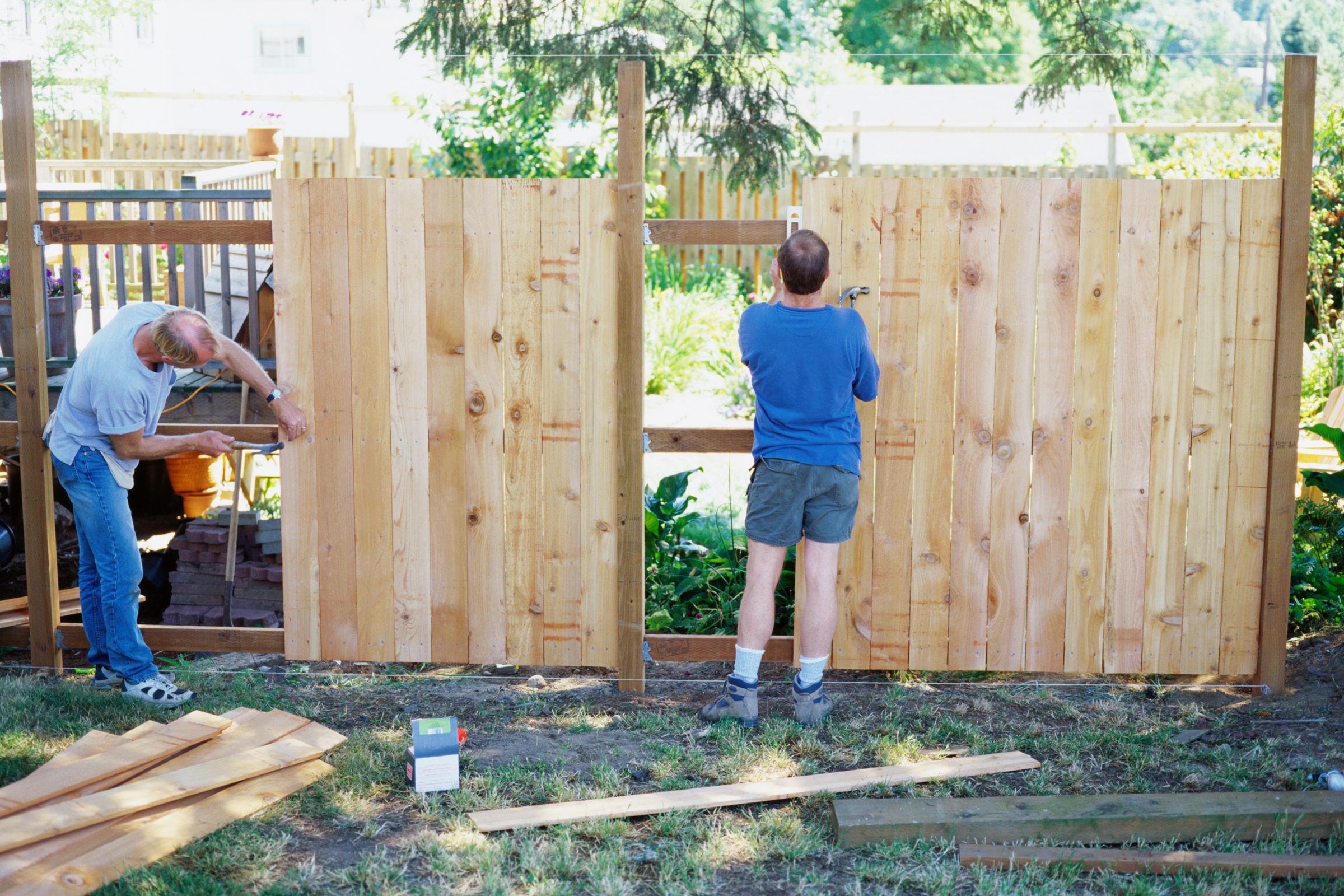If you want a sturdy fence, you have to know how far to space fence posts. For most wood fences, the standard spacing is eight feet.

How Far Apart Should Fence Posts Be?

When you’re building a fence, proper spacing of the posts is crucial. If you set them too far apart, the rails will sag, and the wind will make short work of your fence. Setting them too close creates a lot of extra digging and unnecessary expense, while giving the fence a choppy appearance.
Sometimes you don’t have a choice. If you’re installing prefabricated panels, the spacing has to be precise — so precise that you usually have to wait until the panels are installed before you can set the posts in concrete. The two most common panel widths are six and eight feet.
You have more flexibility when cutting your own rails from 2×4 lumber or some other material. With wood fences, the standard spacing is eight feet. Chain link fences are stronger so the posts can be as far apart as 10 feet. Posts for wire boundary or cattle fences can be 25 feet apart.
On This Page
How Terrain Affects Spacing Between Fence Posts
You can build a fence on a slope by letting the rails follow the contour of the ground (racking) or setting them level (step method). When you choose the second method, the ground slopes away from the bottom rail. To avoid leaving a large gap for animals to pass, set the posts closer than eight feet.
Practically speaking, four feet is the minimum distance to avoid making the fence look like it’s made from posts and nothing else. But it’s really up to you. If you space the posts closer, go with the racking method.
If you’re building with prefabricated panels, you can avoid the step method by purchasing racking panels with adjustable hinges. This lets the panels follow the slope of the ground. Whatever method you choose, the spacing will equal the width of the panels, just as on flat ground.
What Is the Maximum Distance Between Fence Posts?
The answer depends on the type of fence.
For solid fences made from wood, composite or vinyl, eight feet is standard. If you put the posts any farther apart, they won’t be strong enough to support the fence in windy conditions.
Posts for chain link fences can be up to 10 feet apart. But at that distance, the top rail can sag. Prevent that by adding more line posts. If you plan to install privacy slats, or you live in an area with heavy snowfall, the top rail needs more support. In those cases, six feet is the recommended spacing.
Posts for wire fences don’t have to support weight, but must be close enough to maintain tension in the wire. The spacing for a standard barbed wire or woven wire fence is from 10 to 12 feet, but this varies with terrain; more posts are needed on slopes.
The purpose of the fence also comes into play. To prevent large animals from passing, posts should be closer together to provide the needed strength. But if you’re building a boundary fence on flat terrain, posts can be as far apart as 25 feet.
How To Space Posts When Installing a Panel Fence
When building a wood fence from scratch, set all the posts in concrete before attaching the rails and slats. You can’t do that when installing panels, though, because approximate spacing won’t do for fabricated panels with a fixed width.
You can, however, dig all the post holes before you start building. Then use a slightly different procedure for erecting the fence, as follows:
Set one corner post in concrete (usually the one on highest ground) and wait for the concrete to set. Attach the first panel to the corner post and the first line post. The panel will automatically level the line post in the direction parallel to the fence, so all you need to do is level it in the perpendicular direction.
You can then brace the post and install subsequent panels in the same way, moving all the way to the opposite corner. When that side of the fence is complete, backfill all the holes with concrete. If you want to upgrade your yard, this cinder block fence is perfect for gardens and yards that aren’t too high.
Also, check out these tips for fence repair.




















